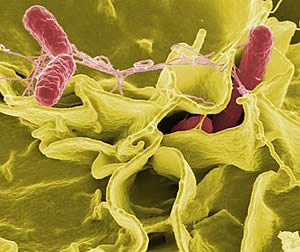 |
|||||||||
|
|||||||||||||||||||
|
|
New Salmonella Legislation for 2009 From this month, legislation in the European Union will ban the sale of fresh eggs from flocks infected with either Salmonella enteritidis or Salmonella typhimurium.
According to Kiotechagil’s chief technical officer Murray Hyden, “the most effective control mechanism is to ensure that feed and water quality are optimised and supportive of healthy commensal microflora.” He points to the Code of Practice which states, ‘Ingredients known to be at a high risk of Salmonella contamination such as cereals and oil seeds stored in flat stores or open bins should be avoided where possible. Also, consider treating protein, cereal ingredients and whole grain feed with aldehyde/acid mixtures (although not on organic enterprises where the use of aldehydes is not permitted). And, after manufacture, feed must also be transported carefully to prevent post processing contamination’. The report records that on-belt manure drying is more successful because it allows the litter to dry faster and attain much lower levels of water activity (Aw). A low water activity, below the threshold of survival for salmonella, will initially prevent multiplication and ultimately cause the death of the pathogens. The report confirmed that a failure to reduce the Aw rapidly results in Salmonella multiplication, persistence and an ability to horizontally infect other birds within the house. “These are very interesting and important findings,” says Murray Hyden. “Certain products, such as Kiotechagil’s SALKIL have been specially developed to optimise gut function, especially in layers and breeders where the high calcium in the ration formulation can result in a higher gut pH dominated by potential enteropathogens.” Enteropathogens erode the villi in the gut resulting in poor nutrient and water uptake. SALKIL provides acid platforms for rapid multiplication of the acidophilic bacteria such as the Lactobacilli, which directly reduce salmonella numbers and reduce intestinal pH. A reduced hindgut pH supports the cellulose digesters that produce butyric acid”. The promotion of cellulose digesters, such as Butyrivibrio, will increase butyric acid levels in the intestine. Butyric acid is an essential colonocyte nutrient to optimise villus health and contributes directly to improved nutrient and water uptake. The result is a healthy drier litter, which not only contains fewer enteropathogens but also has a lower Aw”.
|
||||||||||||||||||

|
|
||||||||||||||||||
| home | agri-services | pedigree
pen | news | dairy | beef | machinery quota | property | organisations | site map |
|||||||||||||||||||


